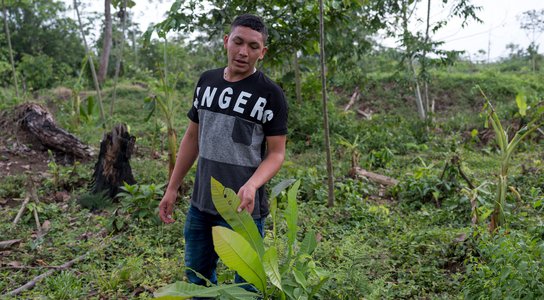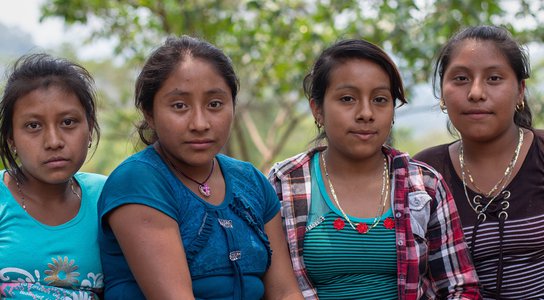Global Witness report highlights use of terrorism laws and aggressive legal attacks by powerful elites to crush protest.
Please note - our 2018 data has been updated since publication. In Colombia we noted 24 cases in the original report - this has been updated to 25. In Indonesia, we covered 1 case in the report, this has been updated to 3. The total number for 2018 is there for 167 instead of 164.
- Global Witness’ annual report on attacks against land and environmental defenders reveals that 164 were killed in 2018 – on average more than three a week.
- Mining was the biggest industry driver, with a number of brutal attacks also linked to hydropower, agribusiness and logging projects.
- For the first time, the report highlights the use and abuse of laws and policies designed to criminalise and intimidate defenders, their families and the communities they represent – with case studies from Guatemala, UK, Iran and the Philippines.
More than three people were killed in an average week last year defending their land and the environment from invasion by industries like mining, logging and agribusiness. Countless more were silenced through other tactics designed to crush protest, such as arrests, death threats, lawsuits and smear campaigns.
For the first time since Global Witness began documenting such killings, the Philippines recorded the highest death toll globally, with 30 victims. The sharpest increase in killings occurred in Guatemala, with more than five times as many in 2018 than in 2017.
Globally, the true number of killings was likely much higher, because cases are often not documented and rarely investigated. Reliable evidence is hard to find or verify.
Mining was the deadliest sector, causing 43 confirmed deaths. 2018 also saw a spike in killings linked to the defence of water sources globally, rising from four in 2017 to 17 in 2018. Among the suspected perpetrators were companies’ private security, state forces and contract killers, sometimes working in coalition.
This year, for the first time, Global Witness also sounds the alarm about the criminalisation of activists and their communities. Evidence from across continents shows that governments and companies are using countries’ courts and legal systems as instruments of oppression against those who threaten their power and interests.
This includes the misuse of existing laws designed to stop terrorists or protect national security, and the creation of new rules to outlaw protest or muzzle freedom of speech. This makes attacks on defenders seem legitimate, increasing their likelihood.
Much of the persecution of land and environmental defenders is being driven by demand for the land and raw materials needed for products we consume every day, from food, to mobile phones, to jewellery.
As detailed in Global Witness’s report, for example, indigenous activists in the Philippines have faced death threats, been thrown in jail and had their homes demolished for opposing the use of their land to grow bananas for sale on global markets.
In Guatemala meanwhile, a boom in private and foreign investment has seen large swathes of land handed out to plantation, mining and hydropower companies, ushering in a wave of forced and violent evictions, particularly in indigenous areas. This has stirred fears of a return to the genocidal violence the country suffered 30 years ago.
The criminalisation of land and environmental defenders isn’t confined to the Global South.
In the UK, three anti-fracking protesters were handed draconian prison sentences in 2018 in a case that has stirred fears that the law is being used to shut down legitimate environmental activism.
This trend only looks set to worsen. While Global Witness’ report focuses on events in 2018, already the signs for this year are bleak as strongmen politicians around the world are stripping away environmental and human rights protections to promote business at any cost. In Brazil, for example, President Jair Bolsonaro’s recent pledge to open indigenous reserves for development has already prompted an influx of armed bands of land grabbers.
Meanwhile, US President Donald Trump’s “energy dominance” agenda also foresees a number of deals that would see large tracts of native lands handed out to oil and gas companies at a time when US states are introducing new legislation to clamp down on protests.
Alice Harrison, Senior Campaigner at Global Witness, said:
“Vicious attacks against land and environmental defenders are still happening, despite growing momentum behind environmental movements the world over. As we hurtle towards climate breakdown, it has never been more important to stand with those who are trying to defend their land and our planet against the reckless destruction being meted out by the rich and powerful.
“It is a brutal irony that while judicial systems routinely allow the killers of defenders to walk free, they are also being used to brand the activists themselves as terrorists, spies or dangerous criminals. Both tactics send a clear message to other activists: the stakes for defending their rights are punishingly high for them, their families and their communities.”
Victoria Tauli-Corpuz, United Nations Special Rapporteur on the rights of indigenous peoples:
“In March 2018, the Philippines government declared me a terrorist. This was in retaliation for me speaking out against indigenous rights violations in my home country. For months, I lived under threat, and could not safely return home. Although I have since been removed from the list, government officials continue to hurl false accusations at me.
“This is a phenomenon seen around the world: land and environmental defenders are declared terrorists, locked up or hit with paralysing legal attacks, for defending their rights, or simply for living on lands that are coveted by others.”
Our main findings:
- 164 land and environmental defenders were reported killed in 2018, which averages out to more than three a week. Many more were attacked or jailed.
- The countries with the highest overall number of recorded deaths were the Philippines (30), followed by Colombia (24), India (23) and Brazil (20).
- The sharpest increase in murders came in Guatemala, with a fivefold rise in killings, making it one of the bloodiest countries per capita, with 16 deaths.
- Mining was the deadliest sector, with 43 defenders killed protesting against the destructive effects of mineral extraction on people’s land, livelihoods and the environment.
- There was an escalation of killings of defenders struggling for the protection of water sources, rising from 4 in 2017 to 17 in 2018.
- More than half of 2018 murders took place in Latin America, which has consistently ranked as the worst-affected continent since Global Witness began publishing data on killings in 2012.
- Global Witness was able to link state security forces to 40 of the killings. Private actors like hitmen, criminal gangs and landowners were also the suspected aggressors in 40 deaths.
- Criminalisation and aggressive civil cases are being used to stifle environmental activism and land rights defence right across the world, including in ‘developed’ countries like the US and the UK.
/ ENDS
Contacts
You might also like
-
Report Enemies of the State?
More than three people were murdered each week in 2018, with countless more criminalised, for defending their land and our environment.
-
Campaign Hub 2017 Defenders Annual Report
'At What Cost?' looks at irresponsible business and the murder of land and environmental defenders in 2017.
-
Campaign Land and environmental defenders
Land and environmental defenders play a crucial role in protecting their land - and our climate - against destructive business practices.